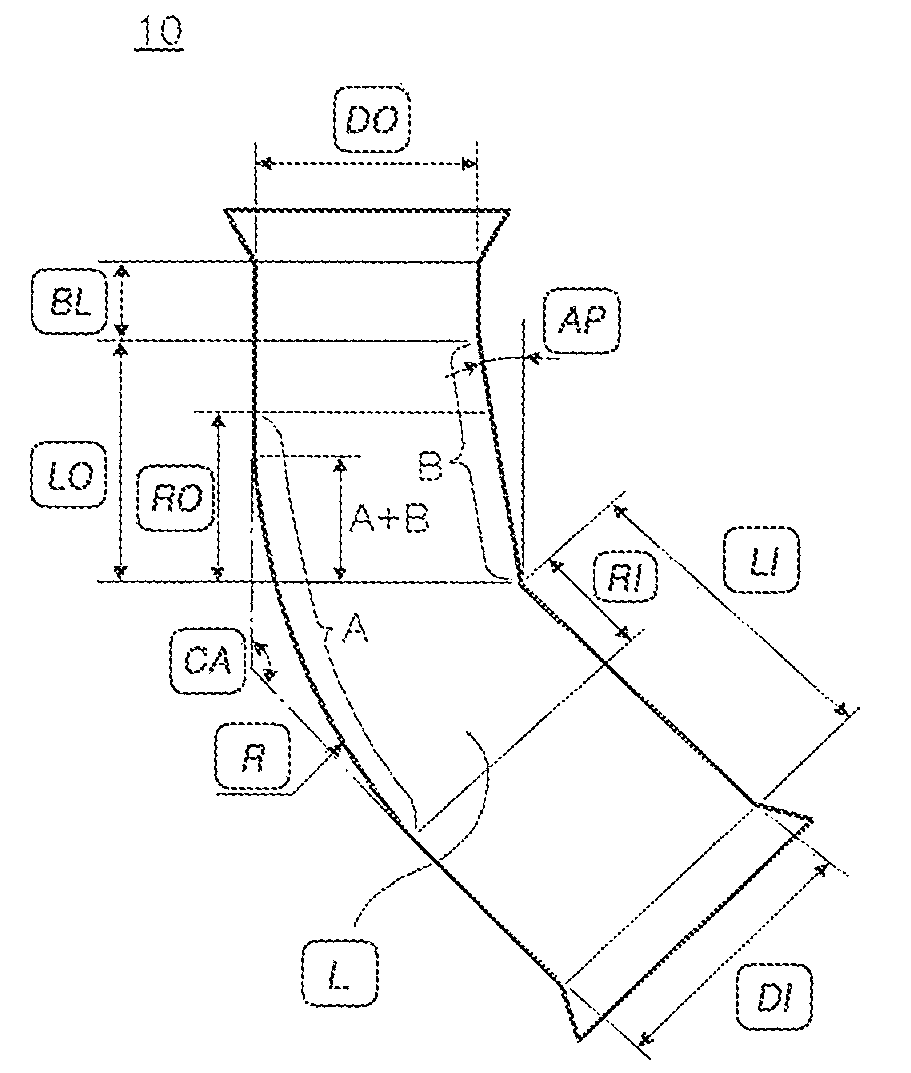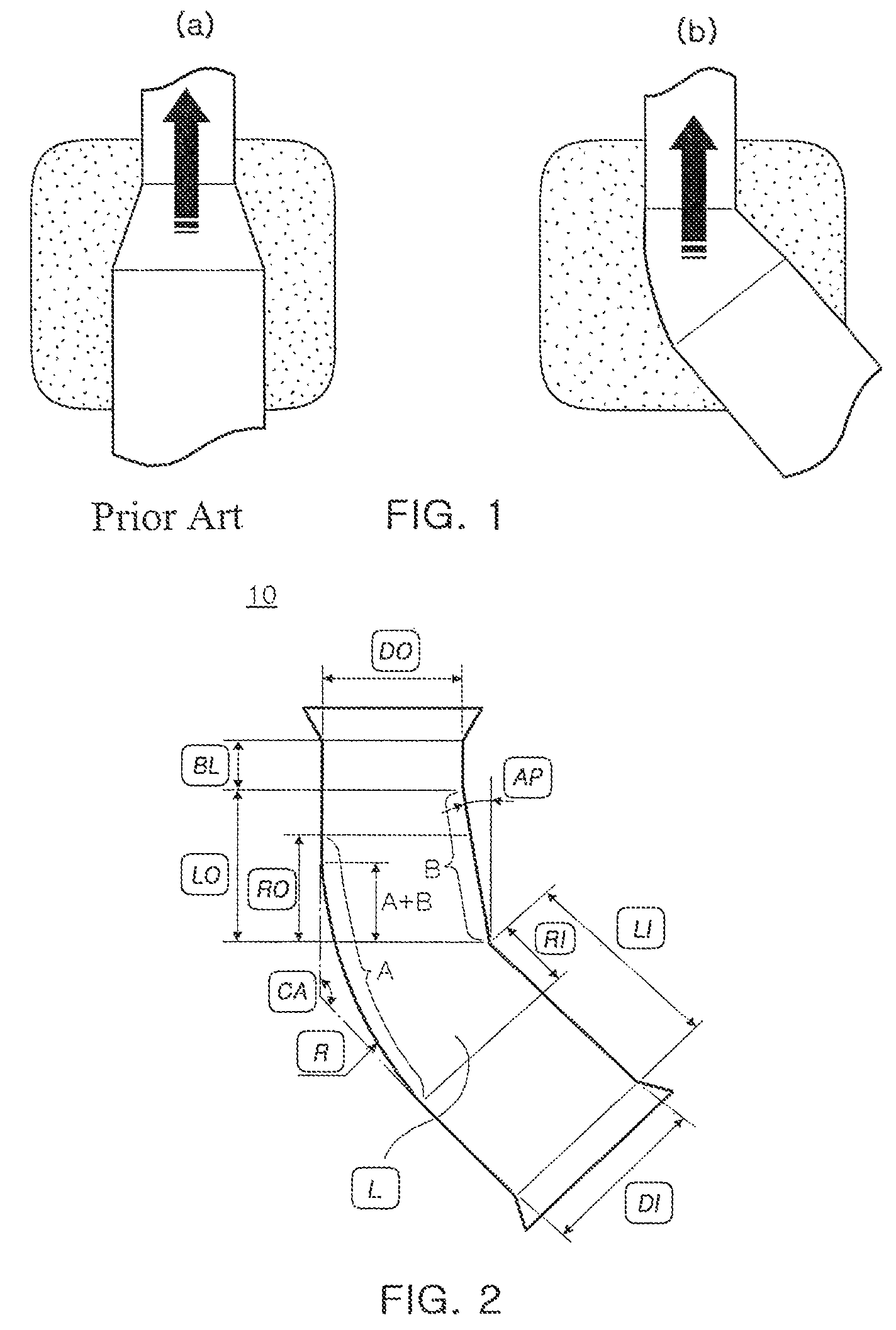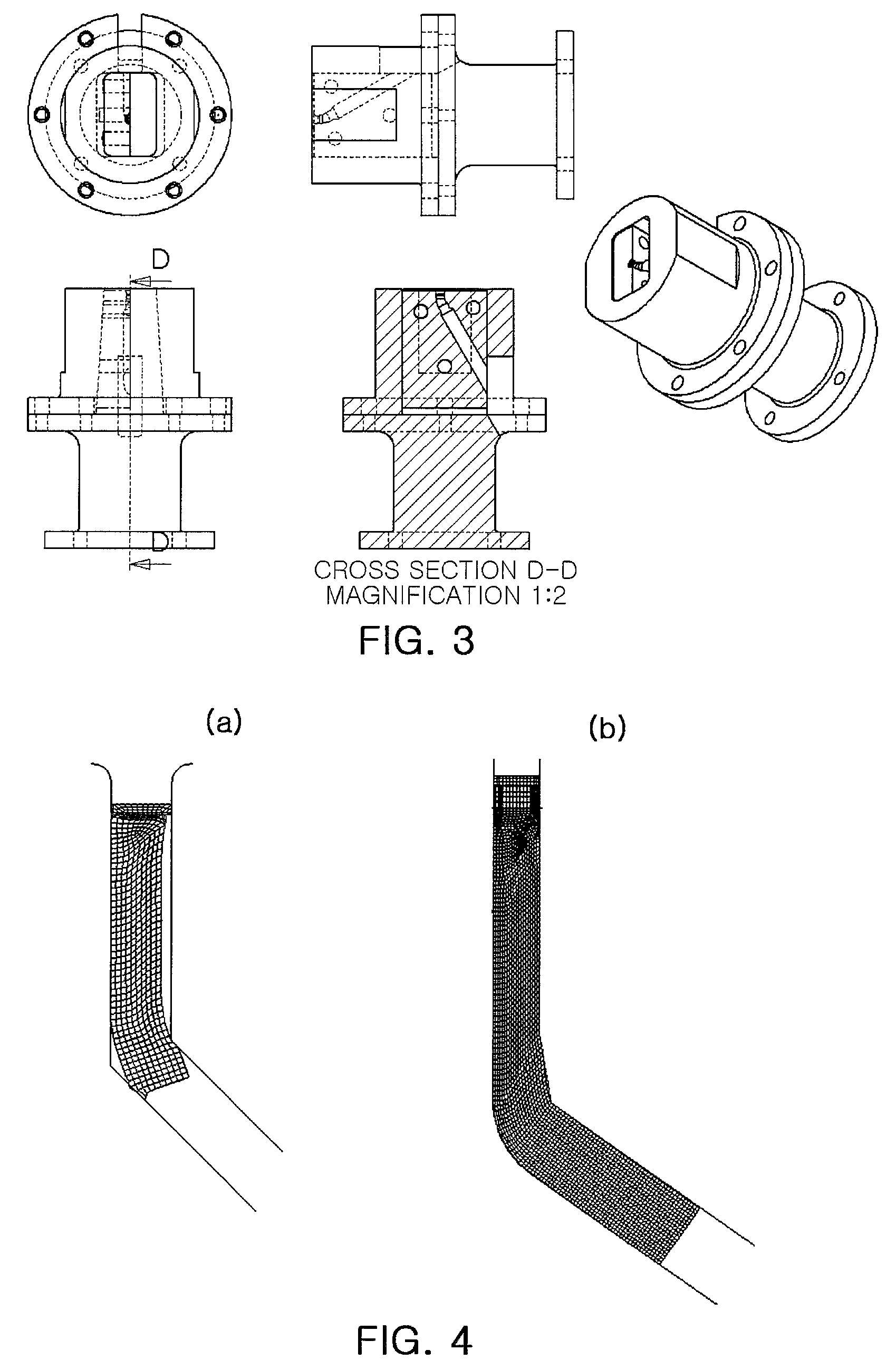Dies for shear drawing
a shear drawing and die technology, applied in the direction of drawing dies, etc., can solve the problems of non-continuous process, limitation in the commercialization of ecae, and non-uniform distribution of cross sections of material in a length direction
- Summary
- Abstract
- Description
- Claims
- Application Information
AI Technical Summary
Benefits of technology
Problems solved by technology
Method used
Image
Examples
example 1
[0060]A shape of a die for shear drawing according to the present invention and a shape of an ECAD die having the same channel diameter as the die for shear drawing were prepared. In order to compare degrees of filling of a material between two dies, experiments were carried out by using a finite element analysis program and fabricating the dies.
[0061]FIG. 3 illustrates a die mold and a fastening device for fabricating the die for shear drawing according to the present invention. A material used for a finite element analysis simulation and experiments of fabricating a real device was plain low carbon steel (0.1 wt % of C), and has an initial diameter of about 10 mm and a length of about 500 mm.
[0062]Finite element analyses were performed on the typical ECAD die having the same channel diameter and the die for shear drawing of the present invention in FIG. 3. Results of comparing the fillings of a material were presented in FIG. 4.
[0063]In FIG. 4, (a) represents a finite element anal...
example 2
[0069]Experiments for the optimization of design factor values were performed in order to design a die having the best filling of a material as in the foregoing Example 1.
[0070]Design factors in the present Example are defined based on the drawing shown in FIG. 2, and presented below—LI: inlet path length, LO: outlet path length, R: radius of curvature at a curved portion, RI: inlet path length where R is introduced, RO: outlet path length where R ends, AP: entrance angle, BL: bearing length, CA: intersecting angle, DI: inlet diameter, DO: outlet diameter.
[0071]A finite element analysis program was used as in Example 1 to obtain conditions for the design factors having the maximum effective strain, and simulation conditions are as follows. A material diameter at an inlet of 10.0 mm, a material diameter at an outlet of 8.5 mm (a reduction ratio of 28%), an intersecting angle of 135°, a drawing speed of 100 mm / min, and a friction coefficient of 0.13 were used, and a test material used...
example 3
[0081]An optimized die was fabricated in Example 2, and various materials were deformed by shear drawing. Drawing conditions were the same as those of Example 2, and medium carbon steel (0.45 wt % of C), subjected to a spheroidizing heat treatment, was used as a workpiece.
[0082]The spheroidizing heat treatment is a process applied to a material mainly subjected to a cold forging process, and is a heat treatment process facilitating cold forging by a softening of a material. That is, the spheroidizing heat treatment is a process of transforming lamellar cementites having a hard microstructure into spherical shapes.
[0083]Although heat treatment conditions differ according to steel types or heat treatment facilities, a material during typical spheroidizing heat treatment is heated above an A1 temperature point and maintained just below the A1 temperature point for a certain period of time, and then, is stepwise cooled in a furnace. A total process may require a lengthy period of time, ...
PUM
| Property | Measurement | Unit |
|---|---|---|
| intersecting angle | aaaaa | aaaaa |
| slope angle | aaaaa | aaaaa |
| intersecting angle | aaaaa | aaaaa |
Abstract
Description
Claims
Application Information
 Login to View More
Login to View More - R&D
- Intellectual Property
- Life Sciences
- Materials
- Tech Scout
- Unparalleled Data Quality
- Higher Quality Content
- 60% Fewer Hallucinations
Browse by: Latest US Patents, China's latest patents, Technical Efficacy Thesaurus, Application Domain, Technology Topic, Popular Technical Reports.
© 2025 PatSnap. All rights reserved.Legal|Privacy policy|Modern Slavery Act Transparency Statement|Sitemap|About US| Contact US: help@patsnap.com



